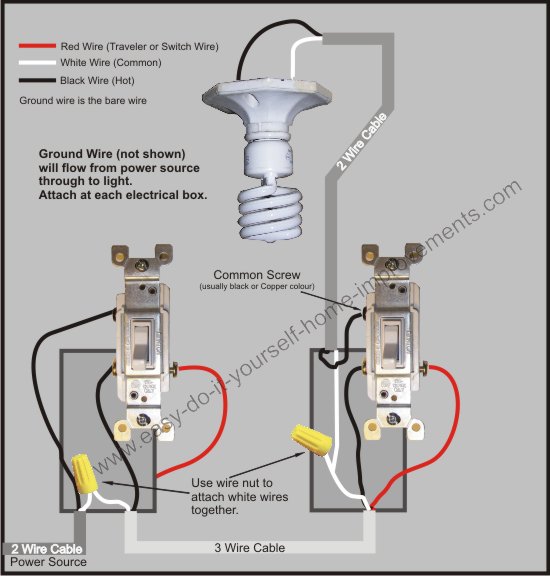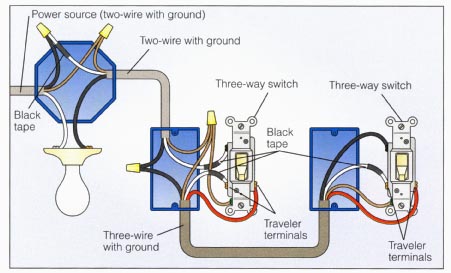I bought one of these to control a ceiling light that has 3 switch locations. I have seen on the net that I am not the only person that had an issue with this, so I thought it might help the next person if I post the solution that I found. After doing the install I found that I could control the light via smartthings/echo dot, but the switches in the wall no longer worked properly. Support from the vendor was enthusiastic but of no real help. The problem stems from the induced “ghost” voltage on the traveler wires between the switches. I have a particularly long run and found an induced 55VAC on the trigger (green) wire to the module. The fix was to install a 320K ohm resistor between the trigger wire and neutral. That brought the ghost voltage down below 20 VAC and was well tolerated by the module. All working well now and it looks like this is a rather useful switching device, assuming you have room for it in the gang box.
Stan
Thanks for sharing this information. ![]()
I’m tagging @Navat604 as he is one of the community’s electrical experts and I’m sure will be interested. Also tagging @TheSmartestHouse .
Thanks for sharing.  I think someone on this forum did have this same issue and he soldered the resistor inside the module to keep it clean and protection from other wires. I believe it was a 1M Ohm.
I think someone on this forum did have this same issue and he soldered the resistor inside the module to keep it clean and protection from other wires. I believe it was a 1M Ohm.
I started at 100K and worked up.
I had 55VAC of float “ghost” voltage on the traveler. The 320K ohm resistor cut the voltage down to something that the module can deal with and I suspect would work in most situations. This of course will be determined by the voltage level which in turn will be determined, for the most part, by the wire length. I went back and forth with smarthomes and they were prompt courteous but ultimately of no help.
Stan
I don’t think you will find someone willing to tell you it’s OK to put a resistor in a residential wiring. It’s a huge reliability to take. You have 110VAC from line to neutral across a resistor in a gangbox with a bunch of other wires jamming behind. ![]()
Understood, but what I got was a lot of requests for pictures of the connections.
It would have been MUCH simpler/smarter to just toggle the sense (green) wire to line locally, if that works, then the problem is “ghost” voltage.
I do understand the liability aspect, but hopefully they can do a redesign and add a resistor internally.
The ¼ watt 320K that I used is at 1/5 rated power, it does not even get warm.
Stan
Thanks for tagging us @JDRoberts
When we worked on troubleshooting for @stan911, we explained that while his solution may work just fine, it’s not a recommended or authorized use of the product so this type of installation voids the warranty for the device and yes, it is a liability  BUT we have forwarded all this feedback to Vision and will work with them to make the product better. @stan911 will be the first to get a free sample as soon as their engineers figure it out. Thanks again for everyone’s input!
BUT we have forwarded all this feedback to Vision and will work with them to make the product better. @stan911 will be the first to get a free sample as soon as their engineers figure it out. Thanks again for everyone’s input!
Does anyone know if this was resolved yet? Purchased 4 of these switches recently and ran into exactly this problem.
My induction voltage is very low (around 6V as per my ac volt meter) but that is enough to hold the switch open (or closed) depending on which 3way is used.
Is there a table of what sized resistor to use for varying voltages? It all you do is jump the green and white with a 1/4 watt resister?
Where did you install it and how did you wire it?
I use the and they work good.
Ghost voltage should not exist. Do you have it without this switch?
Based on your picture you only have neutral at the light so the switch goes there.
The ZL 7431 is installed with the power source in the light…White to white. Black and Blue to the Line (black), Red to the “hot side” of the light and Green on the return black from the switch. As far as I can tell there is only one place in this circuit to install the ZL7431. Up in the light since it is the only place with a hot, a neutral and a switch signal that this little gizmo needs.
Is there ghost voltage without it? YUP! Sure is… I have measured the dead “traveler” in the second switch to ground and I get 6-7V AC on that leg. I have not measured at the light or the first switch yet… I will try that this morning.
The System works great from the mobile app and it works fine from the first switch in the diagram, but the second switch is intermittent. If the lights start “on” that switch will turn them on and off (and back on) but if the lights are off that switch is “mostly” dead.
Apparently inductive voltage on the dead leg of a 3way switch is very common, but I was surprised that as little as 7V AC could trip the smart switch.
I can add that I love these little gizmos too. They easily fit in just about any double gang box, they fit easily in octagon ceiling boxes and they will fit in a single gang box if it just has the one wire nut for the common neutral… They do not fit in plastic “outdoor” boxes as those are slightly less deep (I’m using one to add a remote control to an old traffic light that I have in the backyard). for those boxes you will need a different solution (I ran a hot wire from the switch and put the ZL7431 inside the traffic light LOTS of room in there)
I can also add there are (at least) 5 ways to wire a 3way switch
- Power -> switch -> switch -> light
- Power -> switch -> light -> switch
- Power-> light -> switch -> switch
- Switch -> power & light -> switch
- Light -> power & switch -> switch
These gizmos work great for the #3, #4 and #5 options but I’m pretty sure the first and second option are a no go since there is no one place with the power, neutral and switch signal all in one box.
Could you flip Blue and Red? Red is contact common while Blue is the true contact output. Usually there is a capacitor (or resistor+capacitor) on the output contact to prevent arching and that might be your ghost voltage.

Wow! Thanks that worked. Say, were did you get that wiring diagram? Or did you reverse engineer the little gizmo? I would have never guessed that it was a SPDT relay.
One more question… As I proceed through my house, I’m expecting to find some of the:
power -> switch -> switch -> light 3ways
Any way to make these work in that layout?
My good friend Google pointed me to
Rest of the info I posted comes from my long experience in both electrical and electronics field.
Keep also in mind that there is no such thing as inductive voltage in house wiring.
Very simple if you have neutral at the light and install it there, or in any other switch box where you have both power, neutral and load.
Thanks again,
consider the following common three way wiring option (this is #1 on my list of 5)

As I understand this you need power, neutral, load and a switch signal in one box for the ZL431US.
In this option you have:
Box 1 (switch 1) - power, neutral, but no load and no switch signal
Box 2 (switch 2) - no power, neutral, load and switch signal
Box 3 (light) - no power, neutral, load and switch signal.
Am I right that there is no one spot that has everything that the ZL7431 needs? or am I missing something here.
You’re right. You need one extra wire between the two boxes. Or move load wires to the other box.
Not trying to argue and hope we both could learn more from this discussion but induced voltage is actually a real thing in home electrical. Especially in a 3 or 4 ways wiring.
A wire not connected at both end running along a live wire will have some induced voltage when measure with a high impedance digital voltmeter. It’s safe due to no current but they do cause weird symptom in sensitive circuit. It’s the reason why most electricians also carry an analog meter for troubleshooting.
We also have capacitance coupling causing induced voltage in LED bulbs as well.
Neither am I.
This is what I found
Phantom Voltage orinduced voltage is the result of wire or other metal components appearing to be energized when they in fact are not. How this works is that when you have ungrounded wiring, or older ungrounded romex-type wiring in your home and you add metallic pathways (wires and conduit) to these old circuits the metal wires and/or conduit will pick up an induced voltage merely by being in proximity to the hot conductor in the circuit. The ungrounded wire and conduit and anything attached to it that is not grounded will also appear to be energized (hot) by the simple little Voltage Indicator Tool. Phantom Voltage can make the metal sides of refrigerators, metal light fixtures, metal surface conduit, and metal junction boxes appear energized. As an inspector, it might be my first clue that someone has added newer grounded wiring to the old ungrounded system. With the ground wire not connected to an actual ground source the voltage is induced into the unused ground wire and just like magic we get Phantom Voltage
Source: What is Phantom Voltage-induced voltage? - Charles Buell Consulting LLC
Mostly in ungrounded systems.
In this particular case, having Blue and Black wires reversed, it was a real voltage due to anti-arching components on relay contact.
Hi there,
I guess I played a part in this at some point.
Voltage will be induced in ANY unconnected wire that runs parallel to an energized AC conductor.
This is not opinion, it is physics. The longer the run, the more potential for induction.
In a standard 3 way wiring scheme, there are 2 single pole double throw switches connected “back to back”
That will put an unconnected traveler wire running in parallel to an energized wire, and you will read an induced voltage with a digital meter.
It has nothing to do with old or new wire, my home was built in 2001 using the same type of 14/2 wg and 14/3 wg romex that has been standard in homes for more than 50 years.
This is not a problem for the ZL7431US if you are using it for a simple on off function, but if you use it to control a 3 way circuit, as supplied it does not work. The manufacturer may at some point add a resistor to fix this issue, but if not it is a simple mod.
BTW, mine continues to work perfectly.
Stan
I also see problem in Emerwave and Monoprice 3 ways issue because of induced voltage as well so it’s not a myth or bad grounding either.

